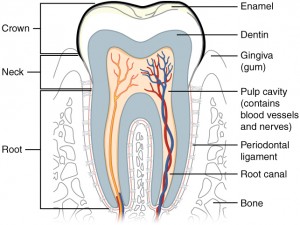
Source: Google images
The battle against cancer is a long-term process that can last months, even years. Most cancer patients receive treatment that involves surgery, chemotherapy, radiation therapy, or a combination of these. Current treatments all have the main purpose of eradicating cancerous cells, rather than controlling the growth of them. A new “adaptive therapy” approach to cancer treatment focuses on suppressing the growth of tumor cells, rather than attempting to completely eradicate them all, by modifying current applications of chemotherapy.
Currently, standard chemotherapy treatments function by administering patients a cytotoxic drug in constant dosages every treatment. These drugs specifically target cells that grow/proliferate rapidly. As well as rapidly proliferating cancer cells, these drugs also end up killing normal cells, like hair follicles and stromal cells. The functional purpose behind these drugs is to kill the maximum amount of cancer cells by usually giving the patient the maximum tolerated dose density of the drug. The problem with this is that the drug will almost never kill all of the cancer cells, thus leftover cancer cells become drug-resistant. These drug-resistant cells no longer respond to cytotoxic drugs and will rapidly proliferate, rendering the treatment useless.
The video below by Chemotherapy explains how cells divide and how chemotherapy drugs work.
Credit: Chemotherapy
In a study conducted by Pedro M. Enriquez-Navas and his colleagues, it was found that a new adaptive therapy approach to administering chemotherapy drugs was useful in reducing and controlling the size of cancerous tumors. Adaptive therapy works by altering the dosage of medication administered to the patient per treatment. The dosage amount will vary depending on how the tumor reacted to the previous treatment. The drug will be delivered in smaller amounts until the growth of the tumor is constant, then the drug will be weaned off of the patient. This treatment allows for the survival of cells that aren’t drug-resistant. Therefore when the tumor proliferates, cells that aren’t drug-resistant will increase in number and not ones that are drug-resistant, thus still allowing the drug to be effective in treatment.
In this study, two different types of breast cancer were treated in mice with a drug called Paclitaxel. The drug was administered using the current chemotherapy approach and the new adaptive therapy approach. Researchers of the study found that when using the current method the tumor initially decreased in size, but eventually returned and was much harder to control afterwards. Whereas when adaptive therapy was used, the size of the tumor was controlled and 60-80% of the mice were slowly weaned off of the drug without relapse.
With success in mice, further human trials could be a great advancement in cancer treatment. This new methodology would allow an extended timeline for survival in terminal cancer patients. Furthermore, this adaptive therapy could be used to control tumor size, then combined with other treatments to possibly eradicate all cancer cells. The results of this study indicate a bright future for this therapy.
Harsh Bhatt




